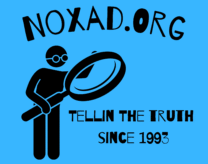Achondroplasia
Achondroplasia is a common type of disproportionate dwarfism. It is a bone growth disorder that causes a short stature with short limbs and a normal sized torso (Kiva, 2015). Achondroplasia is caused by a genetic mutation that occurs early in fetal development (Kiva 2015). This mutation occurs in the fibroblast growth factor receptor-3 gene which is the only know mutational cause of achondroplasia (Defendi, 2016). Due to the two mutations at G1138A and the mutations at G1138C an increase in function is caused on the FGFR3 gene (Defendi, 2016) These mutations that occur cause many different things to happen that usually wouldn’t occur such as decreased cellular hypertrophy, a decrease in cartilage matrix production, decreased endochondral ossification, and an inhibition of proliferation of chondrocytes in the growth plate hormones (Defendi, 2016). The two mutations that occur are found to account for 99% of these patients (Defendi, 2016).
People with achondroplasia may also have children without a big chance of their child having it also. Only about 20 percent of cases with the offspring child having achondroplasia is inherited (Kiva 2015). Achondroplasia can be diagnosed while the mother is pregnant or after when the child is born. To diagnose while the child is in the womb they may use genetic testing if they suspect achondroplasia such as an abnormally large head, or receive a sample of amniotic fluid to look to the defective gene FGFR3 (Kiva, 2015). To diagnose after the child is born the doctor may run blood tests for the defective gene, order x-rays, and even look over the child’s features to look for any abnormalities that are physically present (Kiva, 2015).
[AdsenseImage]
Many physical symptoms may occur with a child that has achondroplasia. These include child being of shorter statue than what is expected for their age, short legs and arms, body be disproportionately smaller than the head, large forehead, and short fingers (Kiva, 2015). An infant may have many health problems directly related to achondroplasia such as sleep apnea, water on the brain, a decreased muscle tone which may add to delays in walking, and spinal stenosis (Kiva, 2015). In adults, signs of achondroplasia may include trouble bending elbows, being overweight, having recurrent problems of ear infections, development of bowed legs, or development of lordosis or kyphosis (Kiva, 2015). The people that have achondroplasia may have difficulty in dealing with their height, differences with others, and even their complications that come with having achondroplasia.
Although this equally happens between males and females their height with achondroplasia slightly differs. In males the average height is 4 foot and 4 inches while in females it is slightly less with the average height being 4 foot and 1 inch (Kiva, 2015). In rare cases an adult may reach a height of 5 foot at the tallest (Kiva, 2015). As of now there is no treatments or cure for a person with achondroplasia (Kiva, 2015). A few things may be done to help with some of the things that people with achondroplasia deal with. For example doctors can prescribe antibiotics for frequent ear infections and surgeries may be done on patients that suffer from severe cases of spinal stenosis (Kiva, 2015). Some doctors may even subscribe growth hormones to children to help increase the growth rate, although the effects have yet to be determined (Kiva, 2015).
[AdsenseImage]
In closing people that have achondroplasia may live a normal life as they chose. With the help of doctors to help manage some of the effects that achondroplasia may have on their lives they can even live a relatively healthy one as well.
References
Defendi, G. L. (2016, January 28). Genetics of Achondroplasia. Retrieved February 12, 2016, from http://emedicine.medscape.com/article/941280-overview
Kiva, R. (2015, December 11). Achondroplasia. Retrieved February 12, 2016, from http://www.healthline.com/health/achondroplasia#GeneticFactors3
[AdsenseImage]
As an Amazon Associate we earn from qualifying purchases through some links in our articles.

